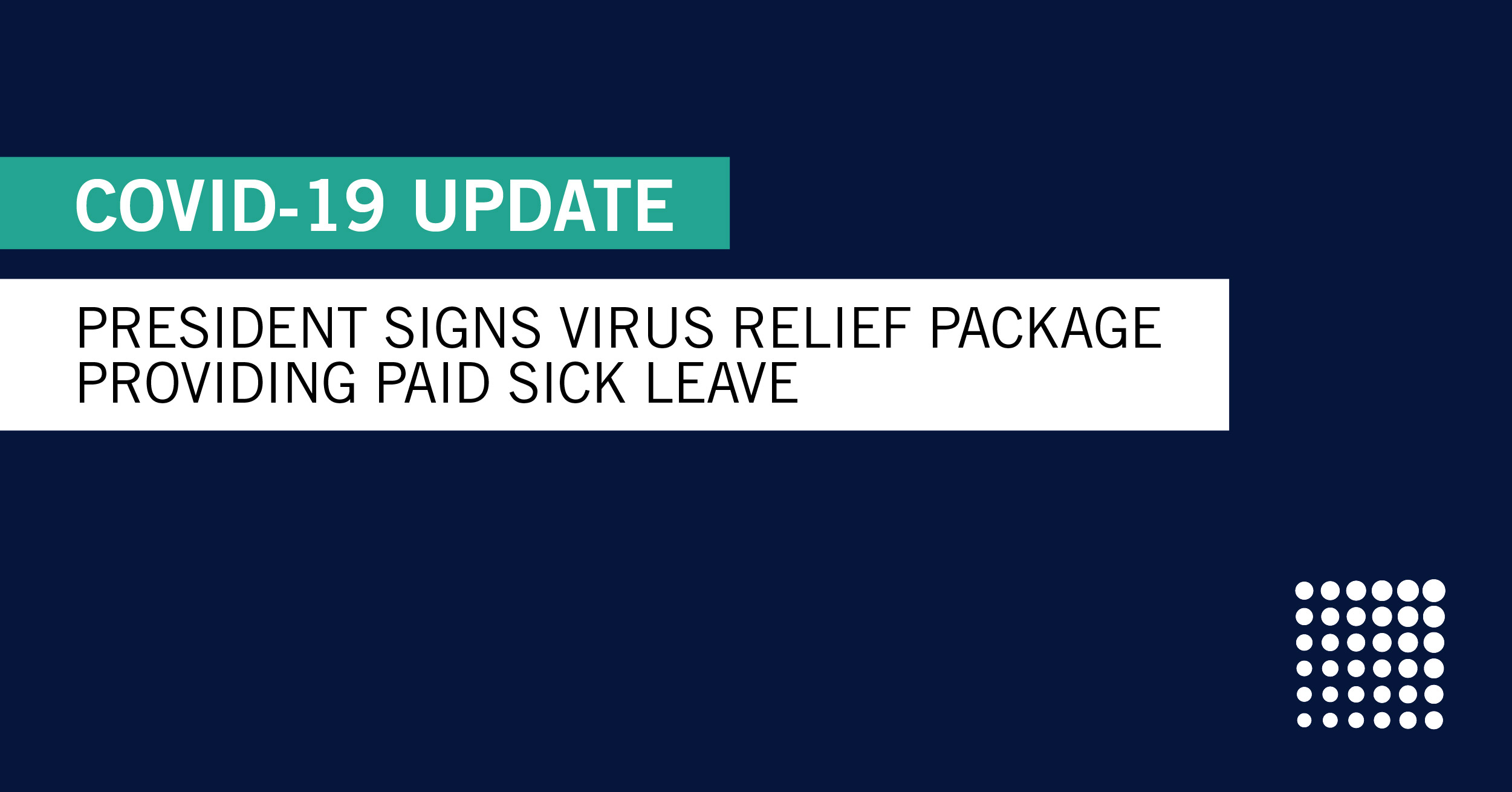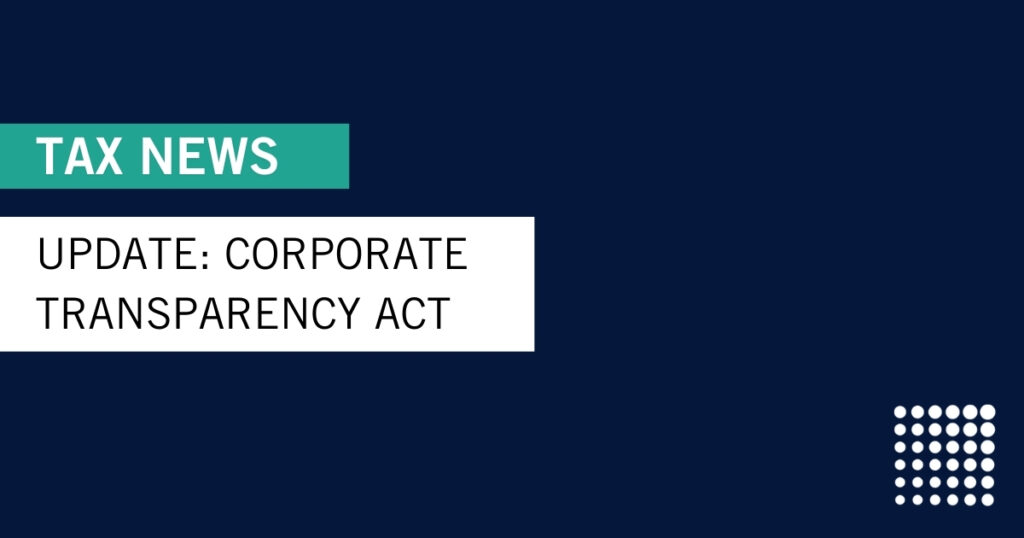Revised bill offers benefits to both employees and employers
On March 18, 2020 the President signed into law a coronavirus relief package that provides paid sick leave, food assistance for vulnerable populations and financial help for coronavirus testing. As the Senate voted, Republican and Democratic leaders were already working on the next proposal.
The following information is evolving as we continue to learn more. The law is very complicated and includes stipulations that may apply differently to unique individuals and businesses based on the type and size of business and state they operate in. It is advised that you consult an employment law attorney or your professional payroll service for specific questions.
PAID SICK LEAVE
Which employers are covered? All employers with fewer than 500 employees are covered. However, there is a small business exclusion for businesses with under 50 employees when the requirement of paying out the sick leave would jeopardize the business’ ability to continue operations. This exclusion however will only apply in a case where the employee is eligible under condition number 5 (noted below).
Employee eligibility for paid sick leave: The benefit is available to all employees of covered employers assuming they meet one of the following conditions which would require their absence from work:
1) To self-isolate because the employee has been diagnosed with coronavirus;
2) To seek a diagnosis or preventative care for coronavirus because the employee is exhibiting symptoms;
3) To comply with a recommendation or order by a public official or healthcare provider on the basis that the physical presence of the employee on the job would jeopardize the health of others;
4) To care for a family member who is quarantining due to a diagnosis, exhibiting symptoms or needs to seek medical care; or
5) To care for their own child (children) whose school has closed or where a childcare provider is unavailable due to the coronavirus.
Benefits provided: During a public health emergency, including the current coronavirus pandemic, an employer must provide an employee with up to 80 hours of paid sick leave at the employee’s regular rate of pay if the employee is eligible under conditions 1 through 3 up to a maximum of $511 per day or two-thirds of the employee’s regular rate if the employee is eligible under conditions 4 or 5 up to a maximum of $200 per day.
Part-time employees are entitled to the typical number of hours that they work in a typical two-week period. For employees that work irregular schedules the employer would need to use the average hours that employee work over the past 6 months.
- Employers must post a notice informing employees of their rights to emergency paid sick leave.
- Existing policies. The emergency paid sick leave is in addition to any sick leave made available to employees under the employer’s existing policies. An employer may not change its current paid leave policy after enactment to avoid this provision.
- Effective date and expiration. This provision will take effect no later than 15 days after enactment and will expire on December 31, 2020.
EMERGENCY FAMILY & MEDICAL LEAVE EXPANSION ACT
Which employers are covered? All employers with fewer than 500 employees are covered. However, there is a small business exclusion for businesses with under 50 employees when the requirement of paying out the “leave pay” would jeopardize the business’ ability to continue operations. The Act also allows for an exclusion of an employee who is a health care provider or an emergency responder.
Employee eligibility for paid leave: The benefit is available to all employees of covered employers, who have worked for the employer for at least 30 days prior to the designated leave, assuming they meet the following condition which would require their absence from work or telework:
- To care for their own child (children) whose school has closed or where a childcare provider is unavailable due to the coronavirus.
Benefits provided: During a public health emergency, including the current coronavirus pandemic, an employer is required to offer the following:
- Unpaid leave for the first 10 days under the Act, however the employee may elect to utilize any accrued paid leave (such as vacation pay or previously accrued sick pay) during this period.
- Subsequently, starting on the 11th day and continuing for up to 10 weeks, using the employees normal weekly schedule, the employer must provide an employee with paid leave at two-thirds of the employee’s regular rate, up to a maximum of $200 per day and $10,000 in the aggregate per employee.
- Part-time employees are entitled to be paid the same two-thirds of their regular rate, based on the average number of hours they worked per week for the six months leading up to taking the emergency family and medical leave pay. If the employee has not been employed by the employer for six months, the employer must use a reasonable number of hours based on the employee’s expectation upon being hired.
Existing policies. The emergency paid sick leave is in addition to any sick leave made available to employees under the employer’s existing policies. An employer may not change its current paid leave policy after enactment to avoid this provision.
Effective date and expiration. This provision will take effect no later than 15 days after enactment and will expire on December 31, 2020.
TAX CREDITS FOR PAID SICK LEAVE
The bill provides a series of refundable tax credits for employers who are required to provide the Emergency Paid Sick Leave to any of their employees. The tax credits shall not exceed $511 per day for employees that are eligible under conditions 1-3 and $200 per day for employees that are eligible under conditions 4 or 5. The credit taken in any individual quarter will not exceed the tax imposed during that quarter. If the amount of credit exceeds the limit for any quarter the excess will be treated as an overpayment and refunded.
WHAT’S NEXT
The Department of Labor (DOL) now has 15 days to create the regulations. There are many open questions and points:
- How will the DOL write the regulations for employers of 50 employees or less? Will they be eligible for the paid leave or exempted? If so, how will an employer opt out? The legislation is unclear.
- Can you require an employee to obtain written documentation from a healthcare provider before paying the new paid leave, or will an employee qualify upon self-imposed quarantine?
- Will employees that are furloughed prior to the enactment of the law be eligible for the paid leave?
Congress and the White House are currently working on more legislation expected in the coming weeks including a $1 trillion package that would include cash payments directly to taxpayers. We will continue to provide details as the legislation is passed and how it will affect the dental industry.
PLEASE BE ADVISED
The CWA advisors have spent many hours interpreting the new law. There are still many questions and thoughts about how this will affect CWA clients. We are diligently working with our partners such as CEDR to provide what we believe is the most accurate interpretation of the law.
However, CWA advisors are not attorneys and this advice cannot be construed as legal advice for your practice. Additionally, every state has different unemployment laws and how this new legislation may integrate with your state could differ. We encourage each of you to consult an attorney in your state for specific questions on employees.
Additional Resources
We will continue to share more details and guidance as it evolves, in the meantime please leverage our other resources:














